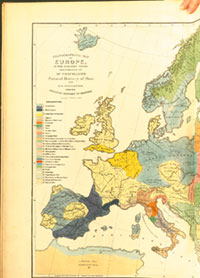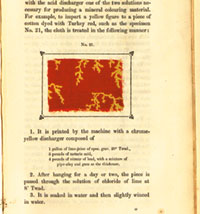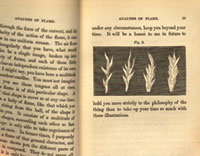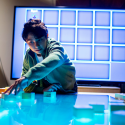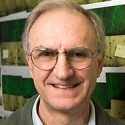Exhibit explores state of science at time of Darwin’s book
In the decade leading up to the publication of Charles Darwin’s “Origin of Species,” scientists explored the origins of animals and humans, made advances in electricity and industry and developed ways to make science more understandable to the public.
Joseph Wilson Lowry, “Tabular View of Characteristic British Fossils, Stratigraphically Arranged” (1853) from “Science Circa 1859: On the Eve of Darwin’s ‘Origin of Species.” The exhibit, which opens Monday, Nov. 23, in the Memorial Library’s Special Collections, explores the state of science before Darwin’s groundbreaking book “On the Origin of Species.”
“Science Circa 1859: On the Eve of Darwin’s Origin of Species,” opening Monday, Nov. 23, in the Department of Special Collections at Memorial Library, explores the state of science before Darwin’s groundbreaking book arrived on the scene 150 years ago. The exhibit is the work of students enrolled in History of Science 350, taught by Robin Rider, who also serves as curator of Special Collections.
With Rider’s guidance, students helped plan and install the exhibit, combing through UW–Madison campus libraries to select materials. The students each had their own display case to fill, including writing a one-page caption that describes the importance of scientific research and popularizations of the period.
James Cowles Prichard, Six Ethnographic Maps … of “The Natural History of Mankind.”
Edward A. Parnell, Dyeing and Calico Printing.
Michael Faraday, A Course of Six Lectures on the Chemical History of a Candle.
“The course gives students a reason to look through books of the 1850s — assessing different styles of scientific illustrations, plowing through 19th-century scientific prose and thinking about ways to engage visitors to the exhibit,” Rider says. “I found their reflections on other museum experiences especially thoughtful and perceptive.”
Maya Aaseby focused her efforts on human sciences and settled on a book about the work of English physician James Prichard, who was among the first to assign all the human races and ethnic groups to a single species. Prichard died in 1848, but his works continued to be published in the 1850s. One book Aaseby selected for the exhibit includes his large, colorful maps showing distribution of ethnic groups throughout the world, which she was drawn to even before she realized they fit in well with her subject area.
“In this class you really get to find all your own materials. This makes it not only more exciting but also a much better learning experience,” says Aaseby, a junior studying biochemistry. “I feel like putting together this exhibit is a great opportunity and one that many students don’t get to experience.”
Some students uncovered materials illustrating the push to bring science to the public, including the annual Christmas lectures at the Royal Institution in London, a tradition that continues to this day, which set the standard for modern scientific demonstration lectures. Michael Faraday, who invented the first electric generator, started the lectures and a printed version of one of his talks — “On the Chemical History of the Candle” — appears in the Special Collections exhibit.
Another book on display provides a window on the fledgling field of paleontology through the eyes of John Warren, an American doctor perhaps best known for the so-called Warren Mastodon, displayed at the American Museum of Natural History. Warren’s book includes an early photograph of a dinosaur track.
Other parts of the exhibit touch on 19th-century expeditions to South America; development of botanical gardens; advancements in textiles and artificial dyes; and scientific institutions including the Royal Geographic Society, of which Darwin was a member.
For Ben Schneider, a junior majoring in chemistry and chemical engineering, putting together his portion of the exhibit was a lesson in when science — particularly chemistry — intersected with industry. His case includes books on how the dye industry was key to the creation of the modern chemical industry and also texts that showcase laboratory experiments used to analyze chemicals during that time period.
“It was amazing to see the beginning of chemical engineering during this time,” Schneider says. “I had no idea this topic was going to connect to my major as much as I discovered through research.”
Students will host a gallery talk about their displays at 4 p.m. on Monday, Dec. 7, at Special Collections. The exhibit runs through March 12 and an online version will be posted early next year. Special Collections is open Monday–Friday, 9 a.m.–5 p.m., and is located on the ninth floor of Memorial Library.


